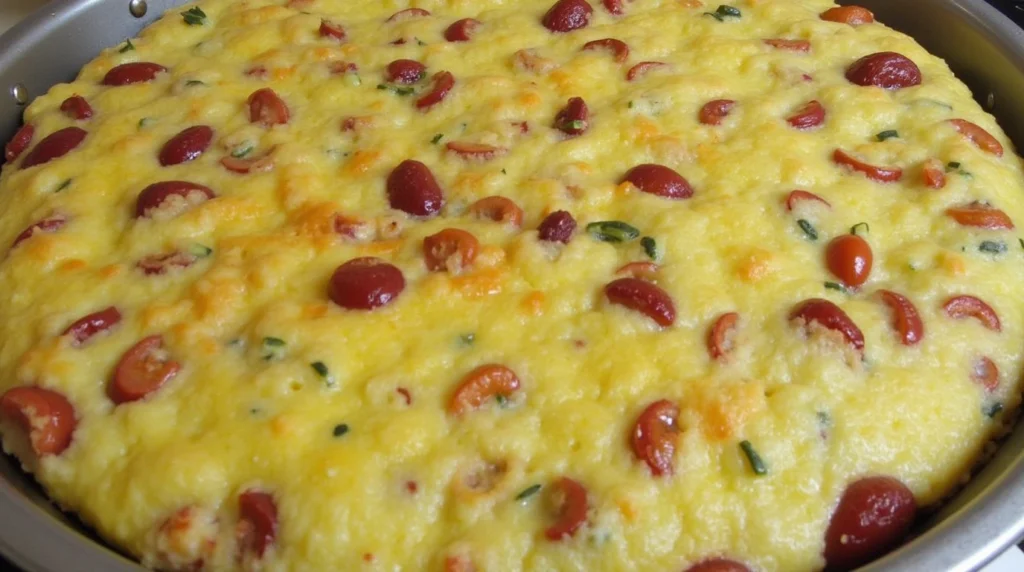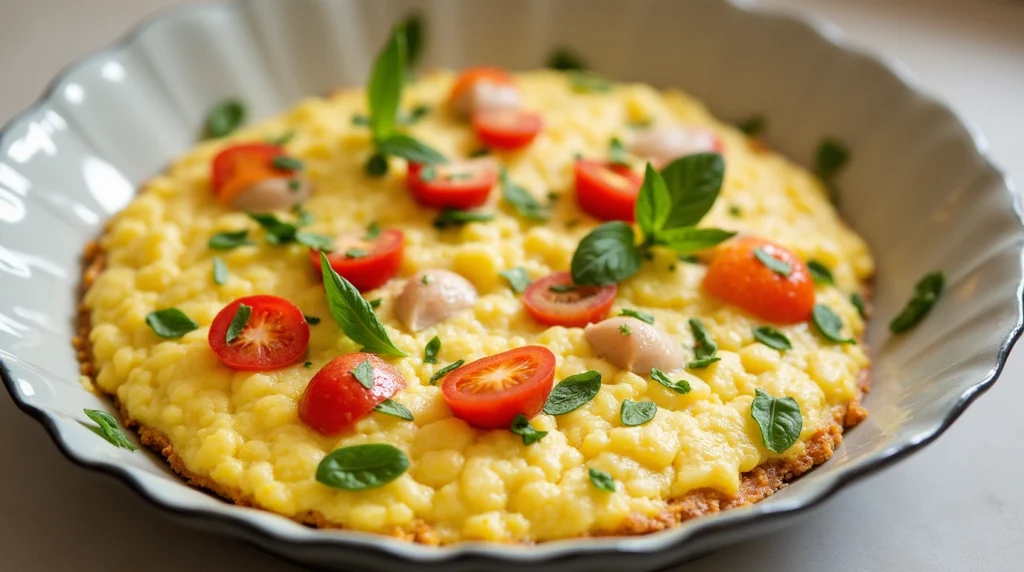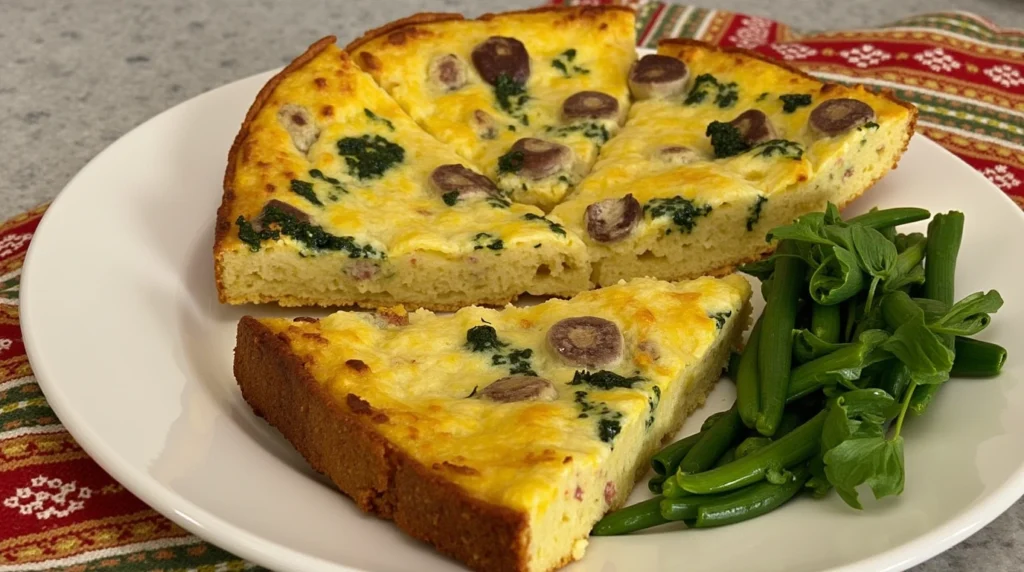Introduction

Imagine this: You’re standing in your kitchen, staring at a carton of eggs, wondering whether to whip up a frittata or an omelet. Both sound delicious, but which one is right for you? Understanding the nuances between these two egg-based wonders can transform your cooking experience. In this comprehensive guide, we’ll dive deep into the world of frittata vs omelet , exploring their preparation methods, ingredients, textures, and cultural roots. By the end, you’ll have all the tools you need to decide which dish suits your lifestyle—and maybe even impress your friends with your newfound culinary expertise.
The Fundamentals: What Is a Frittata and an Omelet?
Before we delve into the differences, let’s clarify what each dish entails:
Defining a Frittata
A frittata is an Italian masterpiece that combines eggs with a variety of ingredients like vegetables, cheese, and protein. It’s typically cooked on the stovetop before being finished in the oven for a golden crust. Think of it as a flat, open-faced omelet designed to serve multiple people.
- Origin: Mediterranean cuisine.
- Cooking style: Slow and steady.
- Ideal for: Sharing with family and friends.
Understanding an Omelet
On the other hand, an omelet is a French creation where beaten eggs are folded around fillings such as herbs, cheese, and meats. Unlike a frittata, it’s cooked quickly on high heat and served individually.
- Origin: French gastronomy.
- Cooking style: Fast and efficient.
- Ideal for: Quick breakfasts or lunches.
Key Similarities Between Frittata and Omelet
While they differ in many ways, these dishes share some common ground:
- Both rely heavily on eggs as the primary ingredient.
- They offer endless possibilities for customization with various fillings.
- Each can be tailored to suit dietary preferences, from vegetarian to keto-friendly options.
Understanding these basics sets the stage for appreciating their unique qualities. Now, let’s explore how they differ in practice.
Cooking Techniques – Where the Magic Happens
One of the most significant distinctions between a frittata and an omelet lies in their cooking techniques. Here’s a closer look:
Preparing a Frittata
Creating a frittata requires patience and precision:
- Start by sautéing your chosen ingredients (e.g., spinach, onions, bell peppers) in a skillet.
- Add whisked eggs and cook over low heat until partially set.
- Transfer the skillet to the oven to finish baking until the top is golden brown.
- Slice and serve hot or cold.
Tools You Need:
- Oven-safe skillet.
- Spatula for stirring.
Making an Omelet
An omelet demands speed and finesse:
- Beat eggs lightly and pour them into a preheated non-stick skillet.
- Let the eggs cook undisturbed until they begin to set.
- Gently fold the omelet around your desired fillings.
- Serve immediately while still warm.
Tools You Need:
- Non-stick skillet.
- Rubber spatula for folding.
Tips for Success
To achieve perfection, keep these tips in mind:
- For a frittata, stir occasionally to ensure even cooking.
- When making an omelet, resist the urge to overcook; it should remain slightly soft inside.
- Experiment with different heat levels to find what works best for you.
By mastering these techniques, you’ll unlock the secrets to creating restaurant-quality dishes at home.
Ingredients and Flavor Profiles – A World of Possibilities
The beauty of both frittatas and omelets lies in their versatility. Let’s examine the ingredients that define their flavor profiles:
Common Frittata Ingredients
Here’s a list of staples you might include in your next frittata:
- Vegetables: Spinach, zucchini, mushrooms, cherry tomatoes.
- Cheese: Parmesan, feta, mozzarella.
- Proteins: Bacon, sausage, grilled chicken.
| Ingredient | Quantity | Purpose |
|---|---|---|
| Eggs | 6-8 | Base |
| Spinach | 2 cups | Texture |
| Feta Cheese | 1/2 cup | Flavor |
Popular Omelet Fillings
For an omelet, consider these classic combinations:
- Herbs: Chives, parsley, basil.
- Cheeses: Brie, Swiss, cheddar.
- Meats: Ham, turkey, smoked salmon.
| Ingredient | Quantity | Purpose |
|---|---|---|
| Eggs | 2-3 | Base |
| Cheddar Cheese | 1/4 cup | Creaminess |
| Bell Peppers | 1/2 cup | Color |
Flavor Differences
- Frittata : Heartier and more robust due to its dense texture and generous use of ingredients.
- Omelet : Lighter and creamier, often featuring delicate flavors.
Feel free to experiment with spices like paprika, turmeric, or garlic powder to elevate your creations.
Cultural Origins and Traditions – A Journey Through Time
Both frittatas and omelets boast rich histories rooted in their respective cultures:

The Italian Roots of Frittata
In Italy, the frittata has been a beloved dish for centuries. Traditionally enjoyed as part of everyday meals, it reflects the country’s emphasis on simplicity and quality ingredients. Today, it remains a versatile option for breakfast, lunch, or dinner.
The French Heritage of Omelet
France takes pride in its omelet-making tradition, viewing it as an art form. A perfectly cooked French omelet is smooth, creamy, and rolled neatly—a testament to the chef’s skill. This dish is often associated with elegant brunches and special occasions.
Regional Variations
Beyond their origins, both dishes have inspired countless adaptations:
- Spanish Tortilla de Patatas : A thicker version made with potatoes and onions.
- American-Style Omelets : Loaded with bold flavors and hearty portions.
Modern chefs continue to innovate, blending global influences to create exciting new recipes.
Which One Should You Choose? – Making the Right Decision
Now that you understand the differences, here’s how to decide which dish fits your needs:
Best Uses for Frittatas
- Perfect for feeding a crowd during brunch gatherings.
- Great for meal prep since it keeps well in the fridge.
- Offers a satisfying option for those who prefer heartier meals.
Best Uses for Omelets
- Ideal for quick, individual servings.
- Excellent for busy mornings when time is limited.
- Provides a lighter alternative for calorie-conscious eaters.
Nutritional Considerations
Both dishes are packed with protein and nutrients, making them excellent choices for health-conscious individuals. Adjust ingredients based on your dietary goals—whether you’re aiming for low-carb, vegetarian, or gluten-free options.
Advanced Techniques for Perfecting Your Frittata and Omelet
Once you’ve mastered the basics, it’s time to level up your skills with advanced techniques that will take your dishes from good to extraordinary.
Tips for Cooking a Flawless Frittata
- Prep Your Ingredients First : Before starting, chop all vegetables, shred the cheese, and prepare any proteins. This ensures everything is ready when the frittata hits the skillet.
- Use Low Heat : Cooking at low heat prevents the bottom from burning while allowing the top to cook evenly.
- Finish in the Oven : For a golden-brown finish, transfer the skillet to the oven for about 5–7 minutes. This step gives the frittata its signature crust.
- Let It Rest : After removing the frittata from the oven, let it sit for a few minutes before slicing. This allows the flavors to meld together.
Common Mistakes to Avoid
- Overcrowding the pan: Too many ingredients can prevent the eggs from setting properly.
- Skipping the resting period: Cutting into the frittata too soon may cause it to fall apart.
Secrets to Making a Restaurant-Style Omelet
- Whisk the Eggs Lightly : Over-whisking can make the omelet tough. Gently beat the eggs just enough to combine the whites and yolks.
- Control the Heat : Cook on medium-low heat to avoid overcooking the exterior while leaving the inside raw.
- Fold Like a Pro : Use a spatula to gently lift the edges of the omelet and allow uncooked egg to flow underneath. Once set, fold one side over the filling and slide onto a plate.
Expert Tricks
- Add a splash of milk or cream to the eggs for extra creaminess.
- Finish with a pat of butter for a glossy sheen.
- Experiment with unique fillings like caramelized onions, sun-dried tomatoes, or truffle oil.
Nutritional Breakdown – Health Benefits of Frittatas and Omelets
Both frittatas and omelets are nutrient-packed powerhouses, but their nutritional profiles depend on the ingredients used. Here’s a closer look:
Macronutrient Comparison
| Nutrient | Frittata (per serving) | Omelet (per serving) |
|---|---|---|
| Calories | ~300 | ~250 |
| Protein | ~20g | ~18g |
| Fat | ~20g | ~15g |
| Carbohydrates | ~5g | ~3g |
Note: Values may vary based on added ingredients.
Customizing for Specific Diets
- Low-Carb : Replace traditional fillings with spinach, zucchini, and avocado.
- Vegetarian : Load up on cheeses, herbs, and seasonal vegetables.
- Gluten-Free : Ensure all ingredients are certified gluten-free, especially if using pre-made sauces or seasonings.
Fusion Recipes – Combining Global Flavors
Why stick to tradition when you can innovate? Below are two fusion recipes inspired by international cuisines:

Mexican-Inspired Frittata
This vibrant dish incorporates bold Latin American flavors:
- Ingredients: Eggs, black beans, corn, diced tomatoes, jalapeños, cheddar cheese, cilantro.
- Instructions:
- Sauté the vegetables and spices in a skillet.
- Pour in whisked eggs and cook until partially set.
- Top with shredded cheese and bake until golden.
- Garnish with fresh cilantro and serve with salsa.
Asian-Style Omelet
A twist on the classic omelet with an Asian flair:
- Ingredients: Eggs, soy sauce, sesame oil, green onions, cooked rice, scrambled tofu.
- Instructions:
- Beat eggs with soy sauce and sesame oil.
- Heat a non-stick skillet and pour in the egg mixture.
- Add cooked rice and scrambled tofu as fillings.
- Fold the omelet and serve with soy dipping sauce.
Storing and Reheating Tips
One of the advantages of frittatas is their ability to be stored and reheated without losing quality. However, omelets are best enjoyed fresh. Here’s how to handle both:
Storing a Frittata
- Cool completely before refrigerating.
- Store in an airtight container for up to 3 days.
- Freeze portions for longer storage; thaw overnight in the fridge before reheating.
Reheating Options
- Microwave : Cut into slices and reheat for 30–60 seconds.
- Oven : Place slices on a baking sheet and warm at 350°F (175°C) for 10 minutes.
For omelets, consider making individual servings fresh each time for optimal texture and flavor.
The Science Behind Texture Differences
Understanding the science behind why frittatas and omelets differ in texture can help you refine your cooking techniques.
Why Does a Frittata Have a Denser Texture?
- Cooking Time : The longer cooking process allows moisture to evaporate, resulting in a firmer consistency.
- Heat Distribution : Baking in the oven helps distribute heat evenly, creating a uniform texture throughout.
What Makes an Omelet So Light?
- Quick Cooking : High heat seals the outer layer quickly, trapping steam inside and keeping the interior soft.
- Folding Technique : Encasing the fillings traps air pockets, contributing to the fluffy texture.
Troubleshooting Common Issues
Even experienced cooks encounter challenges. Here’s how to troubleshoot common problems:
My Frittata Is Undercooked
- Solution: If the center isn’t fully set, return the skillet to the oven for a few more minutes. Alternatively, cover with foil and let it rest to allow residual heat to finish cooking.
My Omelet Tore While Folding
- Solution: Practice makes perfect! Try folding the omelet gently and use a wider spatula for better control.
The Historical Evolution of Frittatas and Omelets
While both dishes have deep cultural roots, their evolution over time reflects changing culinary trends and global influences.
The Rise of the Frittata
- Medieval Beginnings : Frittatas likely originated in Italy during the Middle Ages as a simple way to use leftover ingredients. Early versions were often made with just eggs and herbs.
- Modern Adaptations : Today’s frittatas incorporate a wide range of ingredients, from exotic cheeses to international spices, showcasing the dish’s adaptability.
Fun Fact for Frittata vs Omelet
In some regions of Italy, frittatas are served cold as part of a picnic or antipasto spread. This versatility has contributed to its enduring popularity.
The Art of the French Omelet
- Napoleon’s Influence : Legend has it that Napoleon Bonaparte was so impressed by an omelet he tasted in southern France that he ordered his troops to prepare one for the entire army. Whether true or not, this story highlights the dish’s significance.
- Culinary Prestige : Over time, the French omelet became a symbol of refinement, with chefs competing to create the silkiest, most delicate versions.
Did You Know?
The French Culinary Institute (now the International Culinary Center) considers mastering the omelet a rite of passage for aspiring chefs.
Presentation Matters – Elevating Your Dishes
Even the simplest meals can shine with thoughtful presentation. Here’s how to make your frittatas and omelets visually appealing:
Styling Tips for Frittatas
- Garnish Generously : Sprinkle fresh herbs like parsley, basil, or chives on top for a pop of color.
- Serve with Sides : Pair your frittata with crusty bread, a side salad, or roasted potatoes for a complete meal.
- Slice Artistically : Cut the frittata into wedges or squares, depending on the occasion.
Table Setting Ideas
For a brunch gathering, arrange individual portions on plates with small bowls of dipping sauces or spreads. Add flowers or greenery for a rustic touch.
Plating Your Omelet
- Presentation-Friendly Fillings : Use colorful ingredients like cherry tomatoes, bell peppers, or avocado to make your omelet visually striking.
- Fold Consistently : Aim for a neat, uniform fold to give your omelet a polished appearance.
- Serve Immediately : Transfer the omelet directly from the skillet to the plate to preserve its shape and warmth.
Creative Serving Suggestions
Try rolling the omelet tightly and slicing it into pinwheels for a fun appetizer option. Alternatively, serve it open-faced with a drizzle of truffle oil or balsamic glaze.

Batch Cooking and Meal Prep
Both frittatas and omelets lend themselves well to batch cooking, making them ideal for meal prep enthusiasts.
Preparing Frittatas in Bulk
- Double the Recipe : Use a larger skillet or baking dish to cook multiple servings at once.
- Portion Control : Divide the cooked frittata into individual containers for easy reheating throughout the week.
- Freeze for Later : Wrap slices tightly in plastic wrap and store in freezer-safe bags for up to three months.
Streamlining Omelet Production
- Prep Ingredients Ahead : Chop vegetables, shred cheese, and measure out seasonings the night before.
- Use Muffin Tins : For grab-and-go breakfasts, pour beaten eggs into muffin tins with fillings and bake until set.
- Make an Omelet Bar : Set up a DIY station with various fillings and let family members customize their own creations.
Hosting a Brunch Extravaganza
If you’re planning a brunch party, featuring both frittatas and omelets can cater to diverse tastes and dietary preferences.
Planning Your Menu
- Signature Frittata : Choose a crowd-pleasing recipe, such as a spinach and feta frittata, and prepare it ahead of time.
- Omelet Station : Offer a live omelet bar where guests can select their preferred fillings.
- Accompaniments : Provide sides like fruit salad, pastries, and coffee drinks to round out the menu.
Logistics and Timing
- Cooking Schedule : Start with the frittata since it requires longer preparation. Follow up with omelets, which can be made quickly on demand.
- Delegate Tasks : Enlist friends or family members to help with setup, plating, and cleanup.
Beyond Eggs – Exploring Alternative Proteins
For those looking to reduce their reliance on eggs, there are plant-based alternatives that mimic the texture and flavor of traditional frittatas and omelets.
Vegan Frittata Options
- Chickpea Flour : Known as “Besan” in Indian cuisine, chickpea flour creates a golden, crispy base similar to a frittata.
- Tofu Scramble : Use crumbled tofu as a base and mix in sautéed vegetables for a protein-packed alternative.
Egg Substitutes for Omelets
- Aquafaba : The liquid from canned chickpeas can be whipped to create a foam-like consistency in vegan omelets.
- Nutritional Yeast : Adds a cheesy flavor to plant-based recipes without dairy.
Conclusion : Frittata vs Omelet
In summary, the choice between a frittata and an omelet comes down to personal preference and occasion. While a frittata shines as a shared dish with robust flavors, an omelet excels as a speedy, individual meal. Whichever you choose, remember that practice makes perfect. So grab your skillet, crack some eggs, and start experimenting today!
FAQ Section : Frittata vs Omelet
Q: How is frittata different from omelet? (Frittata vs Omelet)
A: A frittata is cooked slowly on the stovetop and finished in the oven, resulting in a denser texture. An omelet, however, is cooked quickly and folded around fillings, offering a lighter consistency.
Q: Can I substitute ingredients in my frittata or omelet? Frittata vs Omelet
A: Absolutely! Both dishes allow for endless creativity. Swap out traditional ingredients for seasonal produce or proteins that align with your taste preferences.
Q: Is a frittata healthier than an omelet? Frittata vs Omelet
A: Both are nutritious, but their nutritional value depends on the ingredients used. Opt for lean proteins, fresh vegetables, and whole grains to maximize health benefits.
